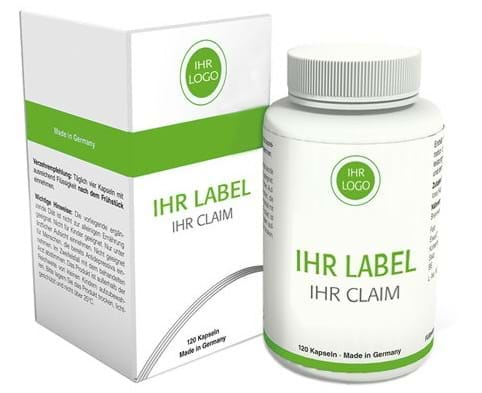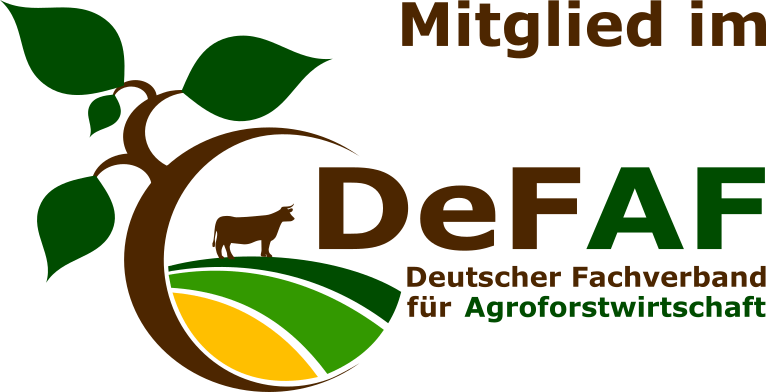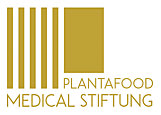Raw material & product ideas
For your innovative health product in contract manufacturing or as a Private Label
In the following, we have compiled some key information on interesting topics and natural raw materials to support and inspire you.
You can find over 70 ready-made standard formulas for food supplements under private label in our dealer area .
Overview and quick navigation "Raw material and product ideas"
Ashwagandha (Withania somnifera) - one of the best Ayurvedic herbs
Ashwagandha – the name conjures up exotic images and distant lands. It is one of the many names for this highly interesting medicinal plant, which is also known as the poison gooseberry or winter cherry, or by its scientific name withania somnifera. In traditional Indian medicine – Ayurveda – the plant has established itself over thousands of years as an effective remedy for a wide range of health issues.
›› Read more: Information as a PDF file (German)
Beetroot (Beta vulgaris) – red, round and healthy
Beetroot is healthy, tasty and full of life. The beet provides a wealth of valuable nutrients, it helps against high blood pressure and has an anti-inflammatory effect. Thanks to its special nutrient compounds, it supports the body’s detoxification and protects against heart disease. Beetroot works well in quick-prep dishes and can be eaten both raw and cooked. ...
›› Read more: Information as a PDF file (German)
Burma-Spirulina
Spirulina, also known as Arthrospira, belongs to the so-called cyanobacteria and is often referred to as microalgae. It has long been used in human nutrition, but many people are still completely unaware of this natural wonder. Meaning that it is high time to take a closer look at this microalgae and its special ...
›› Read more: Information as a PDF file (German)
›› Offprint from issue no. 2006/116 as a PDF file (German): Different antiviral activity of extracts from spirulina/arthrospira plantenis
Candida albicans
Candida albicans is a yeast fungus found on the mucous membranes of the mouth and throat, in the genital area and in the digestive tract of many people. The fungus belongs to the facultative pathogenic agents (and causes illness only under certain conditions) and lives in balance with the human immune system and other microorganisms. According to the German Society for Nutrition (Deutsche Gesellschaft für Ernährung), the fungus can ...
›› Read more: Information as a PDF file (German)
The caper - the underrated plant for your health
You may be familiar with “Königsberger Klopse” – a meatball dish in white wine sauce – or “Vitello tonnato” – slices of veal served in a rich fish sauce made from tuna? Both dishes incorporate capers as their common spice. Did you know that this spice plant has many positive effects on your health? What are capers? The pickled flower buds of the true caper shrub (Capparis spinosa) are called capers. Pea-sized flower capsules grow from the plant’s stem ...
›› Read more: Information as a PDF file (German)
The cucumber (Cucumis sativus) – nothing more than just water?
The cucumber plant (Cucumis sativus) belongs to the cucurbit family. Essentially, there are two different subgroups: the salad cucumber and the pickled cucumber. Salad cucumbers can grow up to 60 centimetres in length and weigh 500 grams. In addition to its high water content, the cucumber is made up of 2 per cent carbohydrates and very low amounts of ...
›› Read more: Information as a PDF file (German)
Diabetes-Concept
A cup of black coffee for breakfast and a rich gourmet lunch with wine – is this the solution for patients with type 2 diabetes? Nutritionists recommend eating five or even seven smaller meals a day instead of three main meals. These proposals continue to remain valid. However, this also applies to healthy people. For certain diseases, however, it is possible that the establishment of ...
›› Read more: Information as a PDF file (German)
Energy capsule
According to a study in which all age and occupational groups over the age of 18 were surveyed, more than half of all Germans feel stressed. The consequences include persistent fatigue, inner tension, listlessness or sleep disorders. In order to cope with this effectively, both body and mind can actually use an extra portion of energy and protection, for example, in the form of a healthy diet. However, in addition to everyday stress ...
›› Read more: Information as a PDF file (German)
Essential oils
Many people are familiar with essential oils as a room fragrance or as a bath additive. But essential oils can do more than just smell good! Given their valuable ingredients and diverse range of properties, they have been used for centuries to promote good health. Essential oils are mixtures of many different natural, biochemical compounds that belong to secondary plant substances. They are ...
›› Read more: Information as a PDF file (German)
Feverfew
A small ornamental plant with a powerful effect! For centuries, feverfew has been one of the traditional herbs used to promote good health. In Germany, however, it was almost consigned to history – and wrongly so! It gained new popularity in the 1970s when researchers discovered the ingredient parthenolide – a substance with very interesting properties. ...
›› Read more: Information as a PDF file (German)
Fisetin - A secondary plant substance with many positive effects
Secondary plant substances are those plant constituents supplied with food that are not essential for the cell’s maintenance. For the plant, however, there are a variety of applications. The secondary plant substances are used, for example, to protect against insect damage and UV radiation. Due to their structure, secondary plant substances are divided into different classes: ...
›› Read more: Information as a PDF file (German)
Hemp (Cannabis)
Hemp (cannabis) is a remarkable plant. Given its valuable ingredients and properties, it can be used in many different ways; it is also one of the oldest plants in use, and not without good reason. Reason enough then to take a closer look at this plant. What exactly is hemp? Hemp (cannabis) is a plant genus within the hemp family (Cannabaceae). A differentiation is made between the species of the typical ...
›› Read more: Information as a PDF file (German)
Jerusalem artichoke (Helianthus tuberosus)
The Jerusalem artichoke is a root vegetable and is mainly used as a foodstuff in nutrition. Their colour can vary between violet and white depending on the variety. They are prepared in the same way as potatoes, but unlike potatoes, they can be eaten raw. However, like the potato, they have helped many famines to get by in times of great struggle and war.
›› Read more: Information as a PDF file (German)
The lung
The lung is the human respiratory organ. Its vital task is to enrich the blood with fresh oxygen and remove used oxygen from the blood in the form of carbon dioxide (CO2). An adult can accommodate roughly 10,000 litres of air flow into the lungs via the airways every day. Approximately half a litre of air is breathed in and out with every breath. A human being’s lungs can be imagined as standing on their head.
›› Read more: Information as a PDF file (German)
Milk thistle (Silybum marianum)
Legend has it that St. Mary was nursing her child when some milk dripped onto the leaves of a plant. The droplets fell on a thistle and this is how the white inclusions in the leaves of the milk thistle were formed. It is also known by other names, including ...
›› Read more: Information as a PDF file (German)
The nettle - from a dehydrating agent to a superfood
In Australia, the nettle represents one of the most dangerous plants. On the world’s fifth continent, whole nettle trees can be found, which grow up to ten metres in height and whose toxic stinging hairs cause levels of pain similar to those experienced in labour. However, our native urtica dioica, the Latin name for the nettle, is a valuable and useful medicinal plant whose stinging hairs can be disarmed with a few simple tricks. ...
›› Read more: Information as a PDF file (German)
Pine bark OPC
From the dawn of ancient times, pine bark has played a significant role in folk medicine. Its wound-healing effect was discovered early on. Pine bark was also used in traditional medicine to treat scurvy. However, the range of applications is much broader according to the latest in scientific discovery. However, pine bark owes its fame in the media to its proven virility-enhancing effect. ...
›› Read more: Information as a PDF file (German)
The pistachio – a nut that's got it all
The green nut is enjoying amazing popularity. This is due not least to its impressive composition of key nutrients. In addition to many important vitamins, including a strong antioxidant, it delivers an unbeatable level of potassium among nuts. The positive composition of unsaturated fatty acids rounds off its valuable profile. It is not without good reason that it was traded long ago as a “food fit for a king”. ...
›› Read more: Information as a PDF file (German)
Prickly pear (Opuntia ficus indica)
The prickly pear cactus (Opuntia ficus indica) belongs to the cactus family (Cactaceae) and is a tropical plant species originating in Mexico. The genus Opuntia is one of the richest in species and comprises roughly 300 examples. What exactly is the prickly pear cactus? After the discovery of the “New World” by Columbus in the 16th century, the prickly pear cactus was ...
›› Read more: Information as a PDF file (German)
The raspberry
Some minerals find themselves in a functional control loop and influence each other, for example, sodium and potassium, by acting as antagonists in nerve signal transmission. Some are component parts of hormones, like iodine in thyroid hormones. Others, such as some bulk elements, are important for the cells. When dissolved, they ensure electro-neutrality in the body fluids between the tissues and ...
›› Read more: Information as a PDF file (German)
Sea buckthorn (Hippophae rhamnoides)
The sea buckthorn, as a shrub, grows to a height of 1-6 metres and reaches a width of 2 - 3 metres. In the subsoil, the sea buckthorn forms a complex root system in which the roots can spread up to three metres deep and twelve metres on all sides. Given their long roots, these plants require a lot of space. The best season for planting it is spring. ...
›› Read more: Information as a PDF file (German)
Waterhyssop (Bacopa monnieri)
The waterhyssop (Bacopa monnieri), also known as “Brahmi” after the Indian god “Brahma”, has been used since ancient times in traditional Ayurvedic medicine to treat brain ageing and promote memory function. We can also use this experience for our benefit. In botanical terms, the waterhyssop belongs to the genus Bacopa and is a member of the plantain family.
›› Read more: Information as a PDF file (German)





 Full service made in Germany
Full service made in Germany







